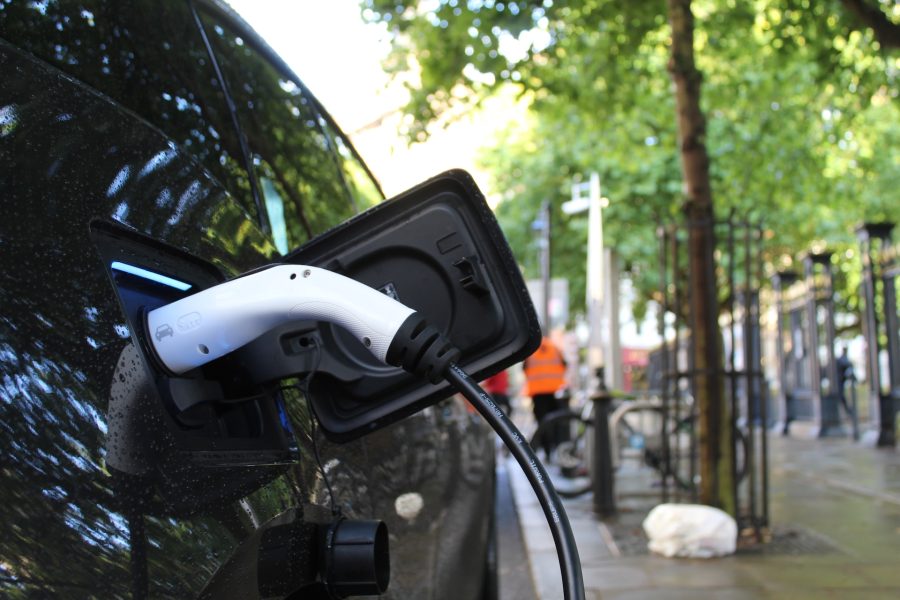Electric vehicles are going to be a big part of our lives in the near future. Not only are they necessary to protect the planet, but also in helping us move on from finite fuel sources. With EVs playing that kind of role in our future lives, you’d think EV adoption rates would be high. Unfortunately, that’s not the case.
People are buying electric vehicles, but a lot of people are hanging onto their internal combustion vehicles. Whether due to skepticism of new technology or an inability to afford new technology, EV adoption rates need fuel. Fortunately, some regions are adopting quicker than others.
EV Adoption across the Globe
EV adoption rates around the world vary wildly. China and Europe have led the charge, with the US coming in third. This could be due to a number of factors.
In China, for instance, densely populated cities provide the perfect environment for electric vehicles. Short trips in small vehicles are the perfect proving ground for the technology, and it’s proven itself very valuable. EV sales now make up approximately 25% of cars sold in China, and Europe is fast on its heels. As education becomes more widespread, EV adoption rates will grow further. Knowing what EVs are and understanding their benefits are key to trusting and getting excited about this important new technology.
Electric vehicle adoption rates by state within the US also vary wildly. The areas that have adopted early generally have a more robust infrastructure. It’s an important part of keeping those cars on the road. It’s also due to population density. Electric vehicles are more common in big cities than in remote villages. Building infrastructure here ensures the greatest number of residents have access to electric vehicles and chargers.
There may be regional and demographic nuances to adoption rates, but one thing is certain, EV adoption is rapidly accelerating across the globe, if not across every sector. There’s something about EV’s that segments of the general population can grab onto. For example, electric vehicles are still vehicles. It is not a great redesign. EV’s look and operate similarly to what we know, they just get their power from another source.
The push is for all new cars on the road in the US to be electric by 2040, but to get where we need to be, we must not only understand EV adoption rates but also areas for improvement. Those factors will help us overcome existing barriers to adoption. So, what are the barriers to EV adoption that we must address?
Barriers to EV Adoption
With any new technology comes a reluctance to adopt by the majority of people. It’s not that the technology isn’t groundbreaking or valuable, but it hasn’t yet been vetted. Before we can achieve widespread adoption, we’ve got to understand how making the change will affect us. We want to know what will look different in our worlds.
Some barriers are common among all new tech, but some are unique to the EV space. Let’s look at some of the barriers to adoption that need to be overcome to foster widespread adoption.
Costs
One of the biggest barriers to the adoption of new technologies is the cost associated with getting in early. It doesn’t matter what that tech is. When new tech first comes out, it is usually very expensive. Companies begin production with smaller runs that are quite expensive to produce and distribute. That puts new tech out of reach for most consumers until it catches on.
When tech reaches the point of mass production, it is much cheaper to produce. Those savings get passed on to the consumer and further drive adoption. Many people in the majority tend to wait until this point to adopt new technology. Even though electricity may be cheaper than gasoline at the pump, they’ll wait until EV prices come down before buying.
Practicality
Affordability is one thing, but before we adopt a new way of life, we must also know how practical it is. In the world of electric vehicle adoption, that practicality involves a few main factors. For most people, the two that stand out are vehicle range and access to charging stations.
Range
A mode of transportation isn’t extremely valuable if it doesn’t take you where you want to go. When we drive somewhere, we want to know that our vehicle will get us there and back safely. No one likes being left stranded on the side of the road. That’s why limited range and substantially longer refueling times have created this barrier to EV adoption.
In 2022, the average range for EV batteries hit 291 miles. That may be fine for daily errands if you live in the city, but many of us require more distance. Those who live in rural areas or who travel for work may not adopt until ranges are greatly accelerated. They’ll also require reliable access to charging stations before they’re comfortable switching.
Access to Charging Stations
When we’ve got limited range, we want to know that we’ll be able to find a place to refuel along the way. If you’ve ever been on “E” without a place to refuel, you know how helpless it feels. This is why access to charging stations is such an important part of the equation.
While there are gas stations on seemingly every corner, EV charging stations are harder to come by. Even though there are an increasing number of apps that can direct you to a charging station, it’s still not an ideal situation. Until we feel confident that there will be ample opportunities to recharge on trips, many of us will remain wary.
Value
Before we shell out our hard-earned cash, most of us want to know what we’re getting for our money. What are the benefits? How practical is it? We may not fully understand a new product’s benefits yet if it hasn’t been around that long. And since electric vehicles are still expensive, we may not have an affordable way to prove their value.
The value may not sink in until we have a friend or family member who gives a great review. Maybe we will take an electric rideshare vehicle and have a great experience. In some way, we will have positive encounters with EVs. As prices come down, those positive encounters may drive the perceived value up for most consumers.
Old Habits Die Hard
Some people simply don’t like change. They may see the adoption of new technology as the death of the tried and true. No matter how many benefits there are, some people still prefer to do things the way they’ve always done them. This barrier will naturally wane with time and we’ll see more rapid EV growth.
Younger people who have grown up with the technology won’t see the same threat in it. The more stubborn among us will witness widespread adoption and their fears will fade. It may not be what they grew up with, but with proper education, they’ll see how it will benefit future generations.
Factors that will Drive Electric Vehicle Adoption
Electric vehicles have been on the radar long enough that we’re finally overcoming some of those barriers to EV adoption. Production is ramping up, ranges are growing and the infrastructure is spreading to every corner of the country. A closer look at these factors will give you a better idea of where the EV market is headed.
Electric Vehicle Production
The first factor will solve what is perhaps the biggest barrier–production. Each car company that’s dipped its toes in the water has started with a model or two in limited runs. As they’ve caught on, companies have begun to produce more of them. Major vehicle manufacturers are ramping up production, and new companies are entering the EV market. As we see more and more electric vehicles hit the road, we’ll adopt them much more quickly.
Improvements in Battery Technology
In an effort to drive widespread electric vehicle adoption, manufacturers have been paying close attention to the batteries. Batteries that can take us farther and charge more quickly are the holy grail of driving adoption. EVs with ranges and refueling times that rival combustion engine vehicles will likely shift people’s attitudes about the tech. These batteries of the future will take care of two of the big barriers at once.
Major advancements in the future of EV batteries are being made right now. For example, batteries with only a 5-minute charge time or can last up to 500-1,100 miles on a single charge are rapidly being proven possible. Several different universities and companies are partnering with manufacturers to turn traditional battery design on its head.
Other companies are experimenting with more readily available materials to produce batteries that greatly outperform their predecessors. They’re also making them lighter and more efficient. These batteries of the future will drive electric vehicle adoption as few other advancements can.
Expanding Infrastructure of EV Charging Stations
Even with expanding ranges and quicker charging times, if we can’t find a charger, we aren’t going anywhere. If we can find a station, we must also make sure it’s the right kind. That amount of confusion has left many late majority adopters skeptical that they’ll find fuel when they need it. This is where standardizing and expanding our charging station infrastructure steps in.
Shared technology always makes things more accessible. General Motors recently announced that it will adopt Tesla’s charging standard, known as the North American Charging Standard, beginning in 2025. When the largest auto manufacturer in the US adopts the largest charging network in the country, it benefits us all.
Developing standards that big business is willing to adopt means we can fuel any vehicle at any station. No more searching for a compatible pump.
Advanced Charging Technology
In addition to an expanding charging grid, we may soon have a much greater variety of ways to charge up. Companies are working with ways to charge EV batteries with Wi-fi and ultrasound waves. They’re still a long way off but could allow us to charge the vehicle as we drive. As these technologies mature, we may see the need for fewer charging stations overall.
Government Programs
Government programs have the ability to greatly accelerate EV adoption across the country. Offering a financial incentive for EV purchases helps significantly reduce the cost barrier from our decision-making processes. That’s a huge bonus for consumers. The state isn’t left out of these EV incentive programs either.
The National Electric Vehicle Infrastructure (NEVI) Program was set up to provide states with funding to expand their EV infrastructures. To receive funds, states must invest funds no more than one travel mile from designated EV corridors. Facilities must also be available within 50 miles of one another. Investing these funds along the most heavily traveled corridors in the state ensures the widespread availability of charging stations.
As more and more states submit their plans and accept their funds, the infrastructure will improve. We’ll have a reliable travel grid that connects the country and supports interstate EV travel. This access will allow EVs to be as useful on the road as they are in town.
Education
Education is most likely the most imperative part of the EV adoption equation. We cannot adopt something that we do not fully understand. Electric vehicle technology has the potential to make our lives easier but it will also help create a sustainable future that won’t require fossil fuels which contribute to climate change. If people do not know this, however, it is difficult to be inspired to adopt EV usage. Here’s why creating positive EV adoption models matter.
Climate Change
As climate change becomes harder and harder to ignore, we are focusing increasingly on effective solutions. Vehicle emissions are one of the biggest greenhouse gas contributors and EVs have become an important point of focus. The ability to travel without polluting is an integral part of meeting our climate goals. Until we see widespread adoption of vehicles powered by alternative fuels, our daily travel requirements will negatively impact the environment. Fully understanding that impact may help speed adoption.
Sustainability
Our global population is growing exponentially. If we want to sustain that growth, we must make moves toward more renewable resources. There isn’t an endless amount of oil for us to pump out of the earth. Even if there was, burning all that oil would have devastating effects on the earth. Clean energy from renewable sources has never been more important.
Increasing the EV adoption rate is a huge step toward reducing our dependence on oil. But driving that adoption requires educating the public. So it’s everyone’s job to talk to friends and family about positive experiences with electric vehicles and teach young people about the importance of shifting to renewable energy sources.
Institutional learning centers will play a large role too. Youth already live in a world where the effects of climate change are visible and the effects of supply chain shortages caused by unsustainable practices are felt. The more young people can be educated on the benefits of decarbonization and power the grid with renewable resources, the better. Supporting education outreach programming for K-12 students can help overcome barriers to EV adoption.
Educating young people is a long-term solution to an ever-growing problem. When educating the next generation on sustainable practices and renewable resources, the adoption of these practices moving forward gets increasingly more support. You may not see the immediate effect on EV adoption rates, but the seeds of the future have been sown. Providing students with quality education is a big deal. This technology is evolving so rapidly that there’s never a shortage of new and exciting information out there. Effective K-12 education outreach is key to distributing that information far and wide, now and into the future.













